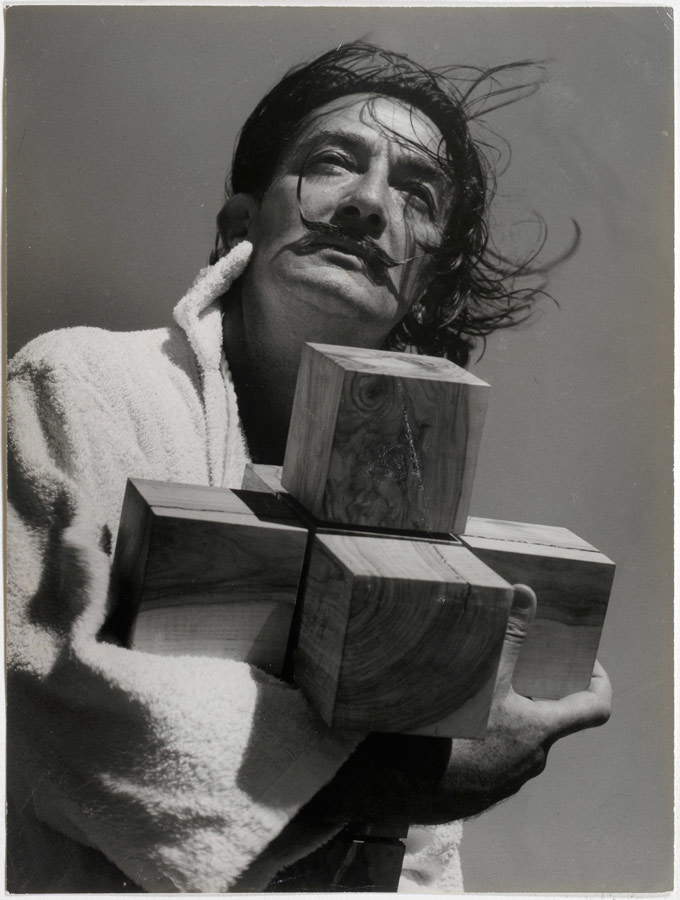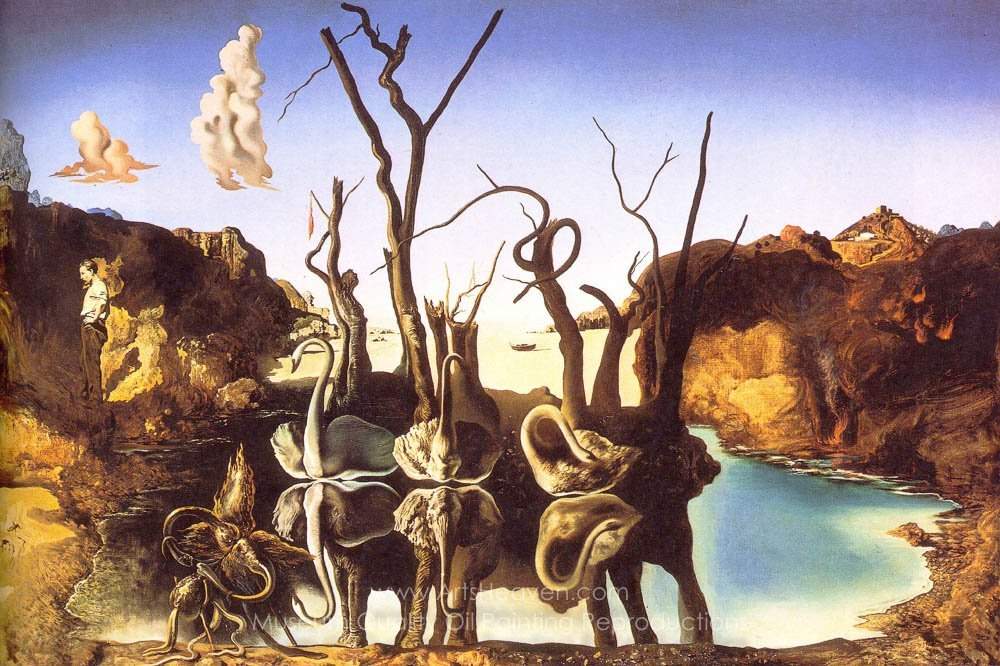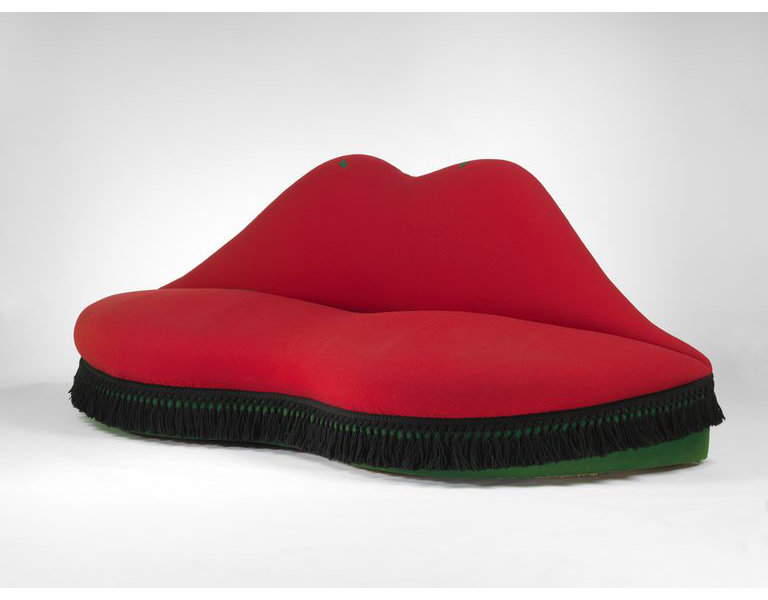Salvador Domingo Felipe Jacinto Dalí i Domènech (Figueres, 1904 - 1989) is one of the most important and eccentric figures in art history, and is known worldwide for his surrealist works. Best known for his approach to surrealism with the paranoid-critical method, he is the author of many famous works such as The Persistence of Memory (1931), Soft Construction with Boiled Beans: Premonition of Civil War (1936), Dream Caused by the Flight of aBee Arounda Pomegranate a Moment Before Waking (1944), The Elephants (1948), Galatea of the Spheres (1952). His artistic production, moreover, is not limited only to the creation of pictorial works, but, on the contrary, also ranges into the field of cinema with the realization together with Luis Buñuel of Un Chien Andalou (1929)or in the field of design with the design of famous objects such as the Lobster Telephone (1936) or Mae West’s Sofa-Lips (1937). In addition to his artistic gifts, he is also known for his eccentric personality and the way he dressed and styled himself: to this day his mustache constitutes his particular and identifying mark.
Surrealism, of which Dalí was a member for a time, is an artistic movement that emerged in the 1920s that highlighted, through the works of its members, a new way of seeing reality, emphasizing the surreal and the dreamlike. Surrealists like to define the style as a “psychic automatism,” in which the unconscious dominates the work of art without being influenced by clichés or inhibitory brakes. The themes therefore most closely associated with the group are love, dreams and madness, and the liberation of the individual. Among the most important Surrealists in the visual arts are Yves Tanguy, René Magritte, Max Ernst, Hans Arp, and Man Ray.
Following numerous disagreements Salvador Dalí was expelled from the group, probably driven out as a result of his refusal to take clear political positions against Francisco Franco or Adolf Hitler. In fact, Dalí preferred to leave politics out of his arguments and works, thus not being influenced by his avowedly leftist colleagues. Despite his expulsion, however, he is invited to participate in various Surrealist exhibitions. The person with whom he has the most disagreements and conflicts within the group is André Breton, a Surrealist poet and essayist, who accuses him of commodifying his art only for financial gain, affixing to him the nickname "Greedy Dollars" (an anagram of the painter’s name whose meaning is “lusting for money”). However, Dalí did not care much about either this nickname or the expulsion, responding with a famous quote, “Surrealism is me.” Throughout his life he is haunted by the thought that he is the reincarnation of his brother, who died prematurely as a result of meningitis. His suspicion is also induced by his parents who name him Salvador, just like his deceased brother. On his suspicion and concern he states, “We looked like two peas in a pod, but we released different reflections. He was probably an early version of me, but conceived in absolute terms.” Her brother also becomes the protagonist of one of her works, titled precisely Portrait of My Dead Brother from 1963.
 |
| Francesc Català-Roca, Salvador Dali with Hipercubic Cross (1953). ©Català-Roca/Fundació Gala-Salvador Dalí, Figueres, 2016. Image Rights of Salvador Dalí reserved. Fundació Gala-Salvador Dalí, Figueres, 2016 |
Salvador Domingo Felipe Jacinto Dalí i Domènech was born on May 11, 1904 in the Spanish town of Figueres to a wealthy family. From an early age, also encouraged by his parents, he attended an art school. Soon after, he enrolled in the San Ferrando Academy, where, however, he was expelled in 1926, shortly before graduating. During his short stay at the Academy he began to paint following Cubist and Dadaist influences and visiting Paris for the first time, and had the opportunity to meet Pablo Picasso, later producing numerous works inspired by his painting. In 1929, together with Luis Buñuel (Caianda, 1900 - Mexico City, 1983), a Surrealist filmmaker, he made Un Chien Andalou, a short film manifesto of the Surrealist movement. A few months later Dalí met his future wife, Elena Dmitrievna D’jakonova also known as Gala, then the wife of his poet friend Paul Éluard. During these years the figure of the painter becomes increasingly recognized and influential, thus becoming the most prominent figure within the movement. While on the one hand there is success and affirmation, on the other hand the relationship with his father breaks down as a result of multiple issues, one among them precisely the same proximity to the Surrealist movement. In 1931 he painted The Persistence of Memory, one of his best known and most admired works. Thanks to this painting and thanks to the art dealer Julian Levy, who exhibited it in his gallery in New York, Dalí also achieved international fame, arousing public interest and curiosity.
Unlike his peers, he never took defined political positions, thus maintaining a detachment between art and politics. He later made paintings inspired by Nazism, portraying Hitler several times. The paintings in question are: The Enigma of Hitler (1939), Metamorphosis of Hitler in a Moonlit Landscape (1958) and Hitler Masturbates (1973). André Breton, avowedly leftist and anti-Nazi, accuses him of aiding and abetting Nazism and not putting up resistance just like the other members of the group. From this political debate began the first conflicts that led to Dalí’sexpulsion from the Surrealist group. Breton later, after Dalí emerges more and more in the world of the art market thanks in part to patron Edward James, gives him the nickname “Greedy Dollars,” or greedy for dollars, ironizing about the commercialization and selling off of his works. With the outbreak of World War II, Dalí and his wife moved to the United States, where they lived for eight years. Here the painter, now out of the group, reconnected with his Catholic faith fruit of works such as The Madonna of Port-Lligat (1949) and Corpus Hypercubus (1954) that inaugurated his period known as "Nuclear Mysticism." When the war ended, in 1951, he moved back to Catalonia despite Francoism.
In the last period of his life he moved towards new ways of producing art, and gave birth to numerous experiments with oleography or action painting. This period is also characterized by his deep interest in optical illusions, which led him to create works such as In Voluptas Mors (1951), a black-and-white photograph depicting a skull formed by seven naked women. Beginning in 1960 he began work on his Theater-Museum in Figueres, a self-commemorative museum designed and created by himself. In 1980 his wife Gala, suffering from dementia, made him drink a cocktail of drugs that caused his brain to deteriorate, thus bringing his artistic career to an end. After Gala’s death in 1982, Salvador Dalí slowly allowed himself to die, even going so far as to attempt suicide several times, never succeeding. However, he died naturally on January 23, 1989 from a heart attack. His body now lies in his Theater-Museum in Figueres.
 |
| Salvador Dalí, The Persistence of Memory (1931; oil on canvas, 24 x 33 cm; New York, The Museum of Modern Art) |
 |
| Salvador Dalí, The Enigma of Hitler (1939; oil on canvas, 95 x 141 cm; Madrid, Museo Reina Sofía) |
 |
| Salvador Dalí, The Madonna of Port-Lligat (1949; oil on canvas, 48.9 x 37 cm; Milwaukee, Marquette University) |
Although Salvador Dalí’s painting takes inspiration from numerous art movements such as Dadaism or Cubism, his painting style remains linked for a long time to that of Surrealism. His method corresponds to what is called “paranoid-critical,” which he invented in the early 1930s. This method consists of transposing images or optical illusions, the result of his unconscious, into his pictorial works. By falling into a paranoid state, the artist enters into a relationship with his unconscious and brings back to the canvas the rationalization of his delusions. Describing his method, the artist writes, “Everyone, especially in America, wants to know the secret method of my success. This method exists. It is called the paranoid-critical method. For more than thirty years I have been inventing it and applying it successfully, although I still do not know what it consists of. Roughly speaking, it would be the most rigorous arrangement of the most delusional phenomena and materials, with the intention of making my most obsessively dangerous ideas tangibly creative. This method works only on the condition of possessing a sweet engine of divine origin, a living core, a Gala. And there is only one.” Daughters of this method are works such as Swans Reflecting Elephants (1937), in which the painter depicts a glimpse of a rocky landscape with a pond on which float three swans that in turn reflect in the reflection of the water three elephant figures, the result of an optical illusion.
Years earlier, in 1932, he produced perhaps his most famous work, The Persistence of Memory, a masterpiece of surrealism. The painting depicts a coastal landscape of the vicinity of Port Lligat (the painter’s place of residence) in which there are various elements, including three soft clocks and a single clock that instead remained hard and solid. The clocks become the protagonists of the painting, symbolizing the passing of time, focusing attention on the relativity of time. Indeed, time in the image seems to stand still, everything is calm and tranquil, despite the fact that the painter highlights a common concern, the passing of time. This painting is also made according to the paranoid-critical technique, whereby the painter, immersing himself in his paranoia and fears (such as the passage of time or the animals he is afraid of), pours them into rational form on the work. The influences for the making of the painting are not only artistic but are also scientific: in particular, the artist draws inspiration from Freud with his thinking related to time and from Einstein, who in his research for relativistic physics focuses on the subjectivity of time.
Over the years he experiments with new modes of expression and design such as design. In fact, he is the author of two objects that have become icons and symbols, the Lobster Telephone (1936) and Sofa - Mae West’s Lips (1937). The first object is, as the title suggests, a telephone where instead of the handset the artist places alobster, according to him a symbol of sexuality and a revelation of drives related to the unconscious world. The figure of the lobster is not new in the master’s art: it appears in other works always connected to sexual pleasure as in the dresses designed for Elsa Schiaparelli or in Dream of Venus (1939), a marine-themed pavilion in which he dresses models with real crustaceans. The second object, on the other hand, is a red sofa that takes the form of a female mouth. Again the object is loaded with sexual meanings and related to the erotic world. The name he gives to the work is that of the actress Mae West (New York, 1893 - Los Angeles, 1980), famous for her abundant forms and full lips. He dedicates the object to this very woman, stating that it is not to be used as a couch but only as an object symbolic of the actress.
In addition to the lobster, another recurring animal in his painting is theelephant, almost always depicted with an obelisk on its back (probably taking inspiration from the so-called Minerva’s Chick, the obelisk in Rome’s Piazza della Minerva sculpted by Ercole Ferrata to a design by Gian Lorenzo Bernini) and with very long and very thin legs. In the painting The Elephants (1948), he depicts two elephants with such features walking in a desert landscape dominated mostly by red sky. The elephants turn out to be very thin and tried by hunger. Again the contrast between heaviness and lightness, between small and large, is emphasized. Indeed, at the base of the two giant animal figures are deployed two very small figures, a man and an angel (probably in reference to the recurring angel rescue theme in religious painting). The elephant is also the protagonist of other paintings: Swans Reflecting Elephants (1937), Temptations of St. Anthony (1941)or Dream Caused by the Flight of a Bee Around a Pomegranate a Moment Before Awakening (1944). The latter work, among the artist’s best known, depicts an undressed woman sleeping lying on a cliff while two tigers are about to attack her. Also in the background is an elephant, depicted with its usual features, while to the side of the scene is a large pomegranate from which a fish emerges, from which in turn one of two lions emerges. The theme of the painting seems to be the result of a dream told to him by his wife who is awakened by the flight of a bee.
In the last period of his life, Dalí approached a new style called “nuclear mysticism,” a phase strongly influenced both by the nuclear attacks on Hiroshima and Nagasaki and by his newfound faith for Catholicism. He thus abandoned surrealism for a time to approach painting from classical and religious themes that also touched on scientific subjects. He would later declare, “The explosion of the atomic bomb on August 6, 1945, had caused a real seismic shock in me. From then on, the atom was the main object of my thoughts. In many scenarios I painted at that time, the great fear that assailed me when I learned the news of the atomic bomb explosion finds expression. I decided to use my paranoid-critical method to probe that world.” Fruit of this period is the painting Galatea of the Spheres (1952), which illustrates the molecular structure of DNA and highlights the painter’s interest in theatom and the breakdown of matter. Clearly visible in the spheres is the portrait of Galatea (his wife Gala), the protagonist of classical mythology as a sea nymph known for her virtue, which is perceived according to optical illusions.
 |
| Salvador Dalí, Swans Reflecting Elephants (1937; oil on canvas, 51 x 77 cm; Private Collection) |
 |
| Salvador Dalí, Sofa - lips of Mae West (1937-1938; wool, wood, metal; London, Victoria and Albert Museum) |
 |
| Salvador Dalí, The Elephants (1948; oil on canvas; Private collection) |
 |
| Salvador Dalí, Temptations of St. Anthony (1946; oil on canvas, 90 x 120 cm; Brussels, Musées Royaux des Beaux-Arts) |
 |
| Salvador Dalí, Galatea of the Spheres (1952; oil on canvas, 65 x 54 cm; Figueres, Dalí Theater-Museum) |
His hometown of Figueres is home to his Theater-Museum. The museum was designed and created at the behest of Dalí himself, who requested that a place be built in memory of his art. The museum stands on the old ruins of the municipality’s old theater and since its inauguration in 1974 has been considered a sort of pilgrimage site for the painter’s supporters. Some of the most important rooms include the courtyard, the Fisheries Room, the Treasure Room, the Mae West Room designed in collaboration with architect Oscar Tusquets, the Masterpieces Room and the Lodge Room.
The museum, along with two other institutions, is part of the Dalinian triangle, a geometric figure formed on a map if one connects the different Spanish museum hubs in its name. The other two museums that are part of it are: Salvador Dalí House-Museum in Port-Lligat and the Gala Dalí Castle in Púbol. The House-Museum in Port-Lligat is where he lived for the longest time. The labyrinthine dwelling now houses his museum where you can wander around the places the painter frequented. The Púbol Museum, on the other hand, is his wife’s gift castle. To this day its function is as a mausoleum for the newlyweds.
In addition to the Spanish museums, numerous other institutions dedicate a museum to the painter, such as the Dalí Museum in Berlin or the Salvador Dalí Museum in St. Petersburg, Florida, which houses some 1,500 works by the artist. Other permanent collections exhibiting works by the master are the Dalí Paris in Paris or the Museo Nacional Centro de Arte Reina Sofía in Madrid, the Fundación March in Palma de Mallorca, the Museo Thyssen-Bornemisza in Madrid, and the Musées Royaux des Beaux-Arts in Brussels. Other works of his, not belonging to permanent collections in his name, are housed in the world’s most important museums such as MoMa which houses The Persistence of Memory, the Philadeplphia Museum of Art, the Tate Gallery or the Museum Folkwang in Essen.
 |
| Salvador DalÃ: life and works of the father of paranoid-critical surrealism |
Warning: the translation into English of the original Italian article was created using automatic tools. We undertake to review all articles, but we do not guarantee the total absence of inaccuracies in the translation due to the program. You can find the original by clicking on the ITA button. If you find any mistake,please contact us.